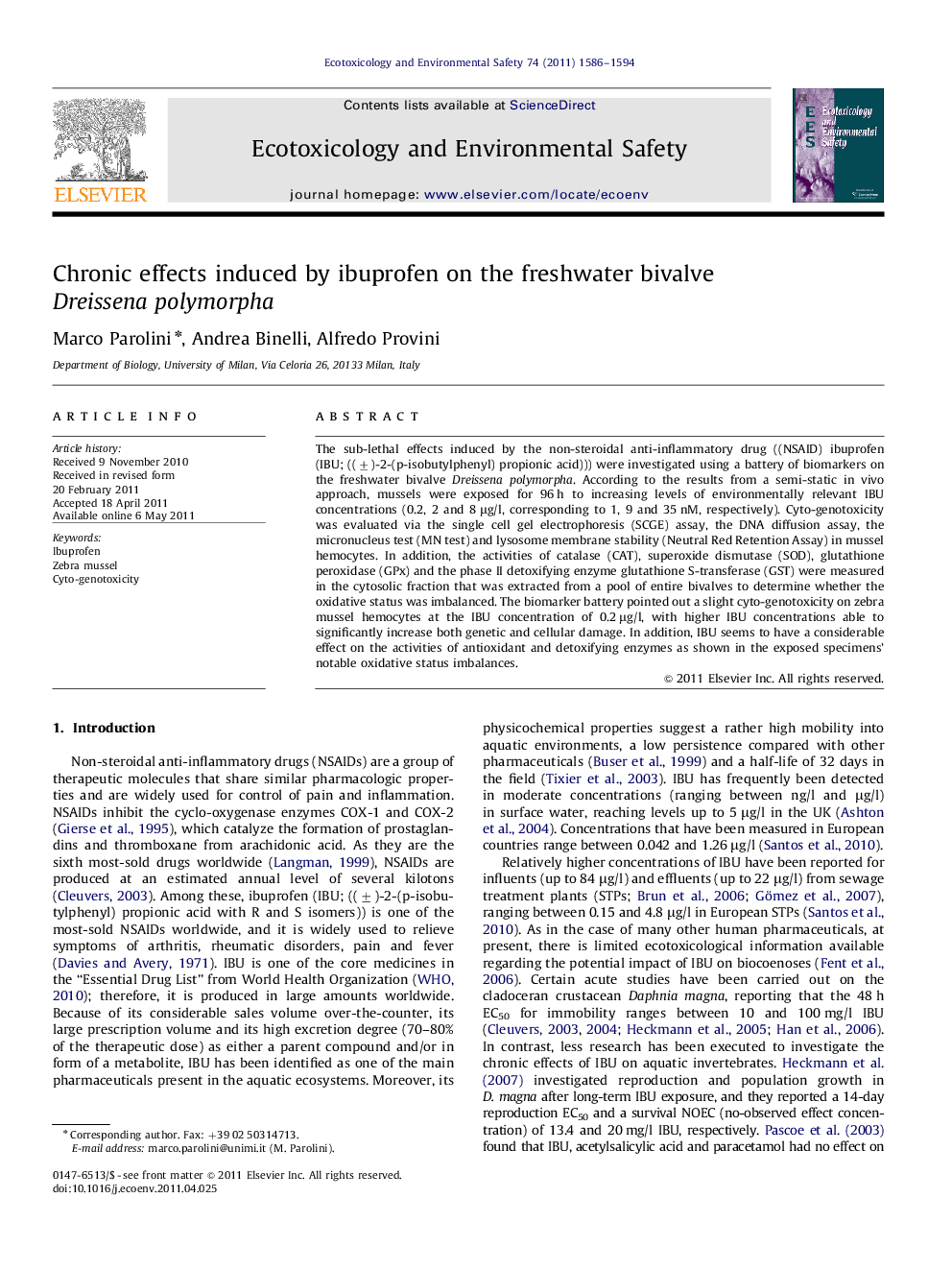| Article ID | Journal | Published Year | Pages | File Type |
|---|---|---|---|---|
| 4421090 | Ecotoxicology and Environmental Safety | 2011 | 9 Pages |
The sub-lethal effects induced by the non-steroidal anti-inflammatory drug ((NSAID) ibuprofen (IBU; ((±)-2-(p-isobutylphenyl) propionic acid))) were investigated using a battery of biomarkers on the freshwater bivalve Dreissena polymorpha. According to the results from a semi-static in vivo approach, mussels were exposed for 96 h to increasing levels of environmentally relevant IBU concentrations (0.2, 2 and 8 μg/l, corresponding to 1, 9 and 35 nM, respectively). Cyto-genotoxicity was evaluated via the single cell gel electrophoresis (SCGE) assay, the DNA diffusion assay, the micronucleus test (MN test) and lysosome membrane stability (Neutral Red Retention Assay) in mussel hemocytes. In addition, the activities of catalase (CAT), superoxide dismutase (SOD), glutathione peroxidase (GPx) and the phase II detoxifying enzyme glutathione S-transferase (GST) were measured in the cytosolic fraction that was extracted from a pool of entire bivalves to determine whether the oxidative status was imbalanced. The biomarker battery pointed out a slight cyto-genotoxicity on zebra mussel hemocytes at the IBU concentration of 0.2 μg/l, with higher IBU concentrations able to significantly increase both genetic and cellular damage. In addition, IBU seems to have a considerable effect on the activities of antioxidant and detoxifying enzymes as shown in the exposed specimens' notable oxidative status imbalances.
